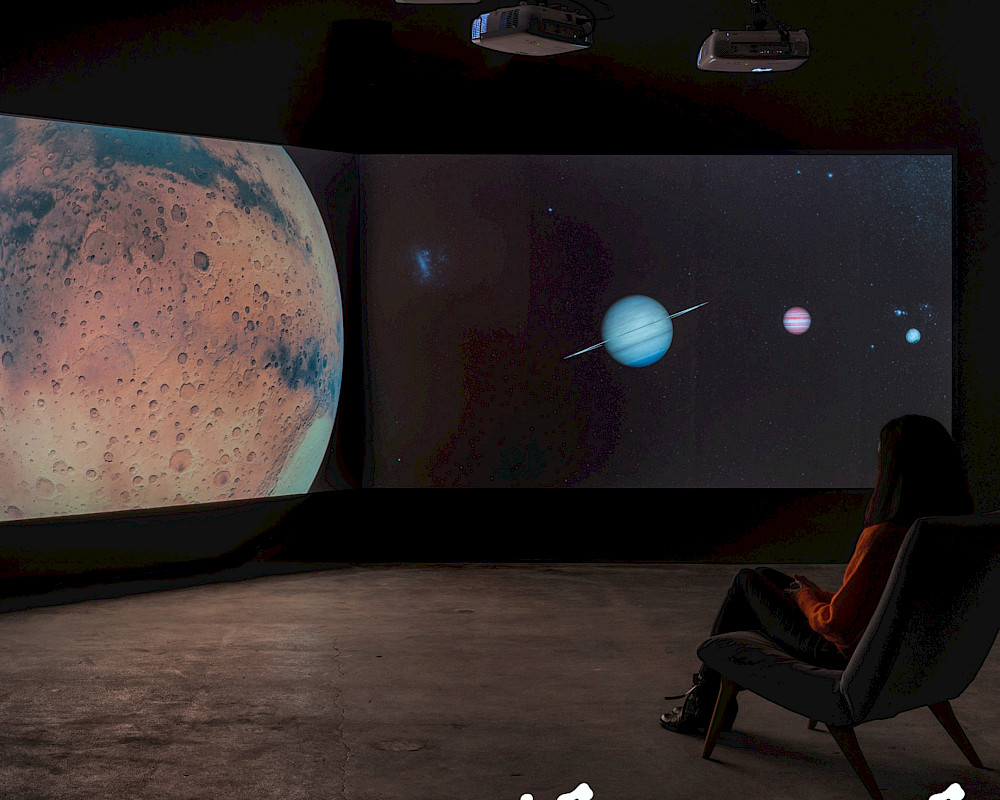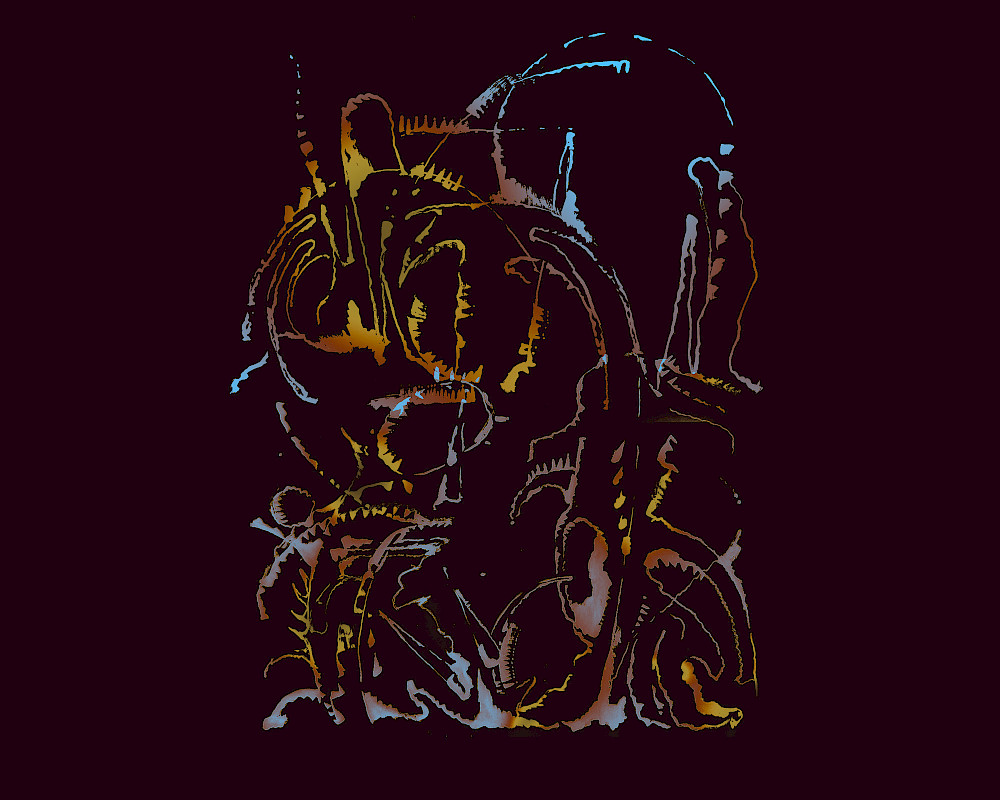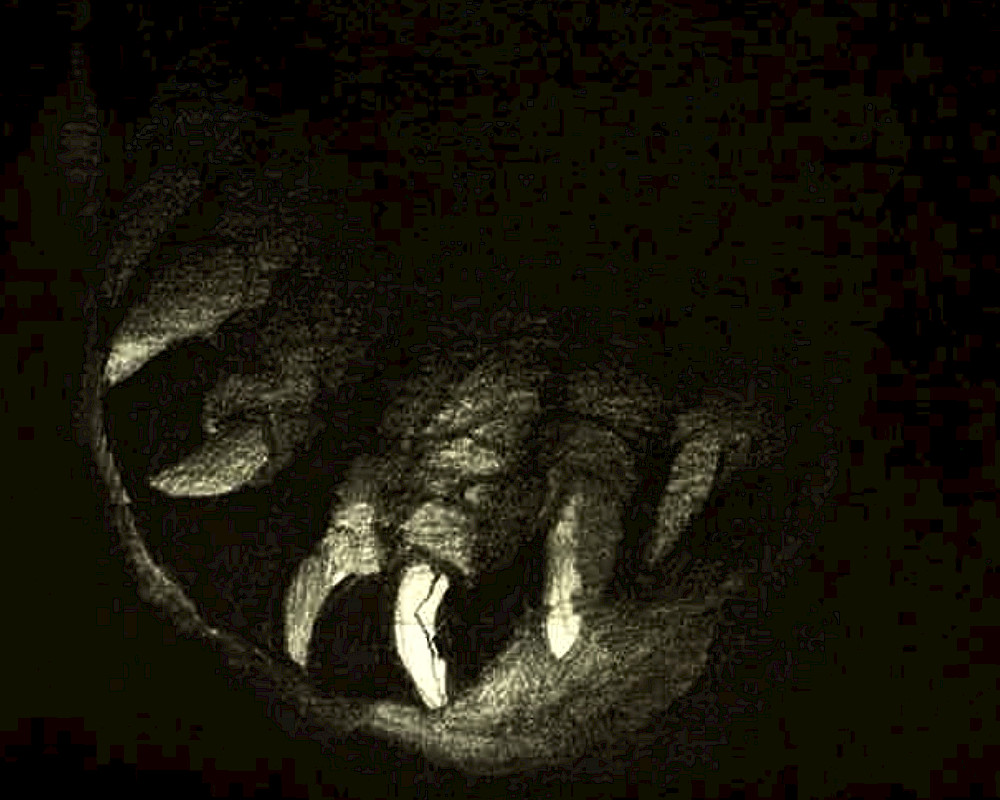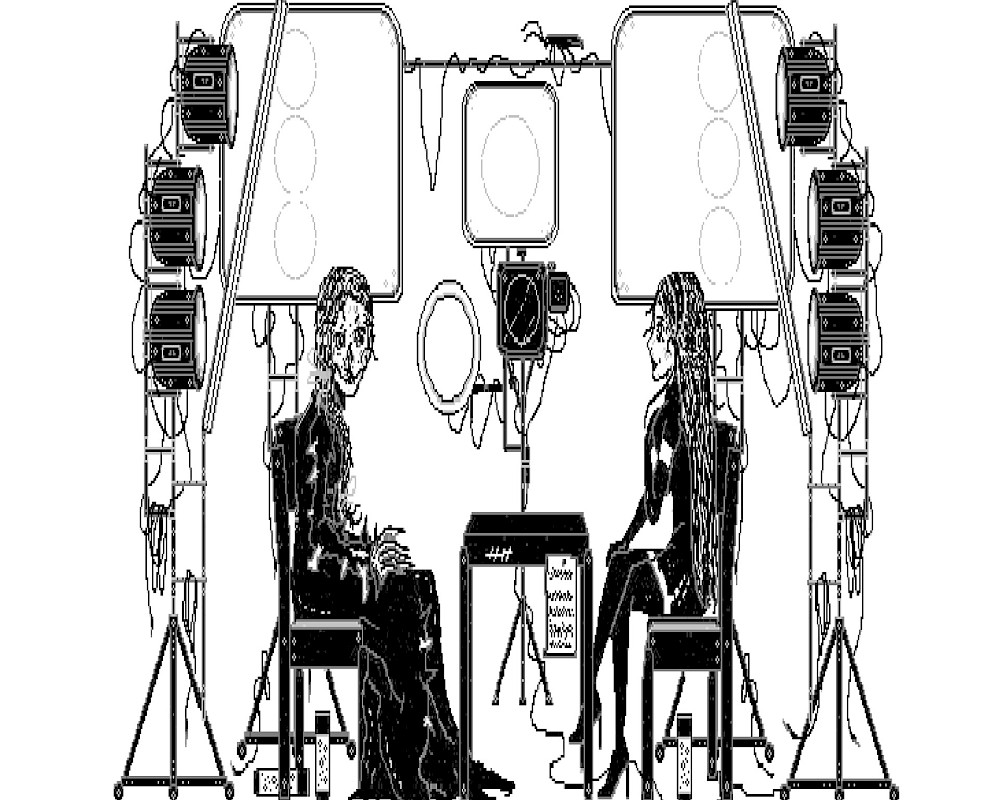podcast
Crit Club Ep. 3: Farid Rakun and Övül Ö. Durmuşoğlu
Cem A.
Cem A., also known as @freeze_magazine, is an artist and curator based in Germany.
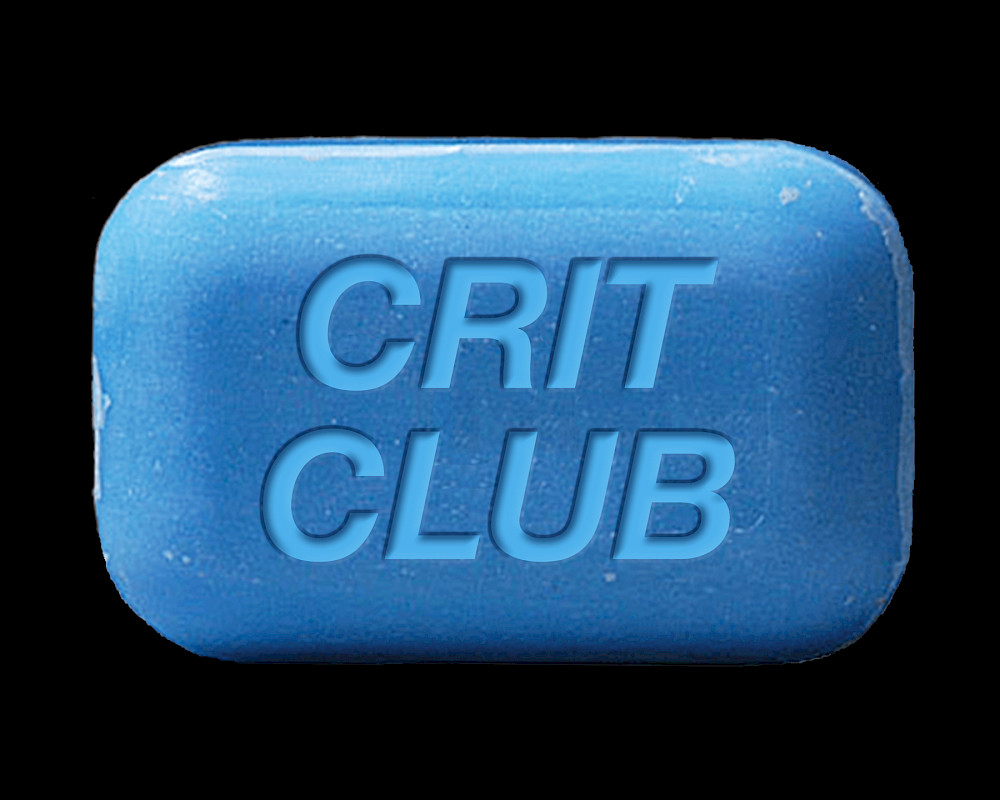
podcast
Crit Club Ep.2: Lucia Pietroiusti and Nora Sternfeld
In this podcast, a contextual performance by Cem A. (aka @freeze_magazine) and Roberto Winter, curators Lucia Pietroiusti and Nora Sternfeld debate an impossible question: should museums exhibit only living artists, or dead artists?
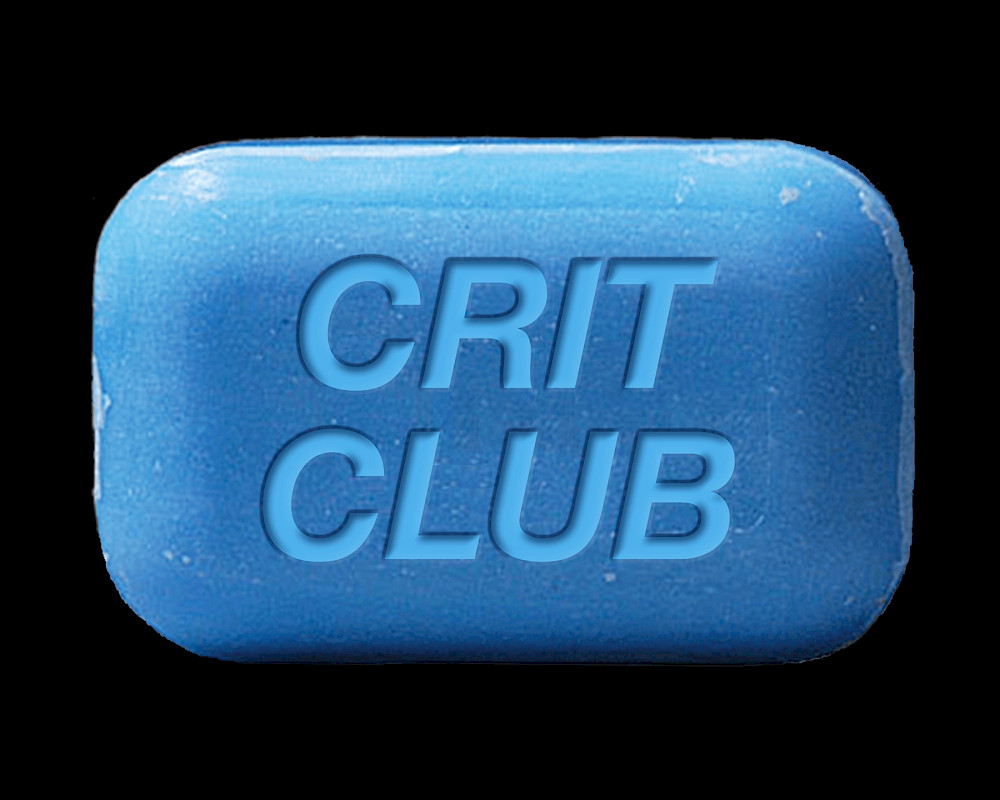
podcast
Crit Club Ep.1: Renzo Martens and Karim Sultan
In this podcast, a contextual performance by Cem A. (also known as @freeze_magazine) and Roberto Winter, Dutch artist Renzo Martens and curator and sound artist Karim Sultan debate a question that is certainly never asked in the art world: should we stop moving all artworks, or stop selling them?
19
min read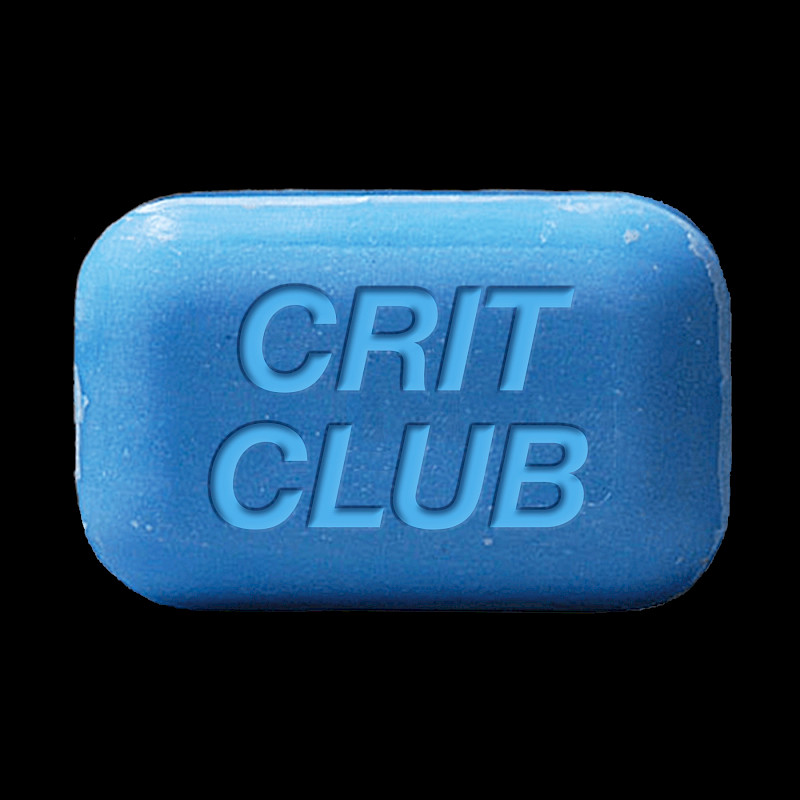
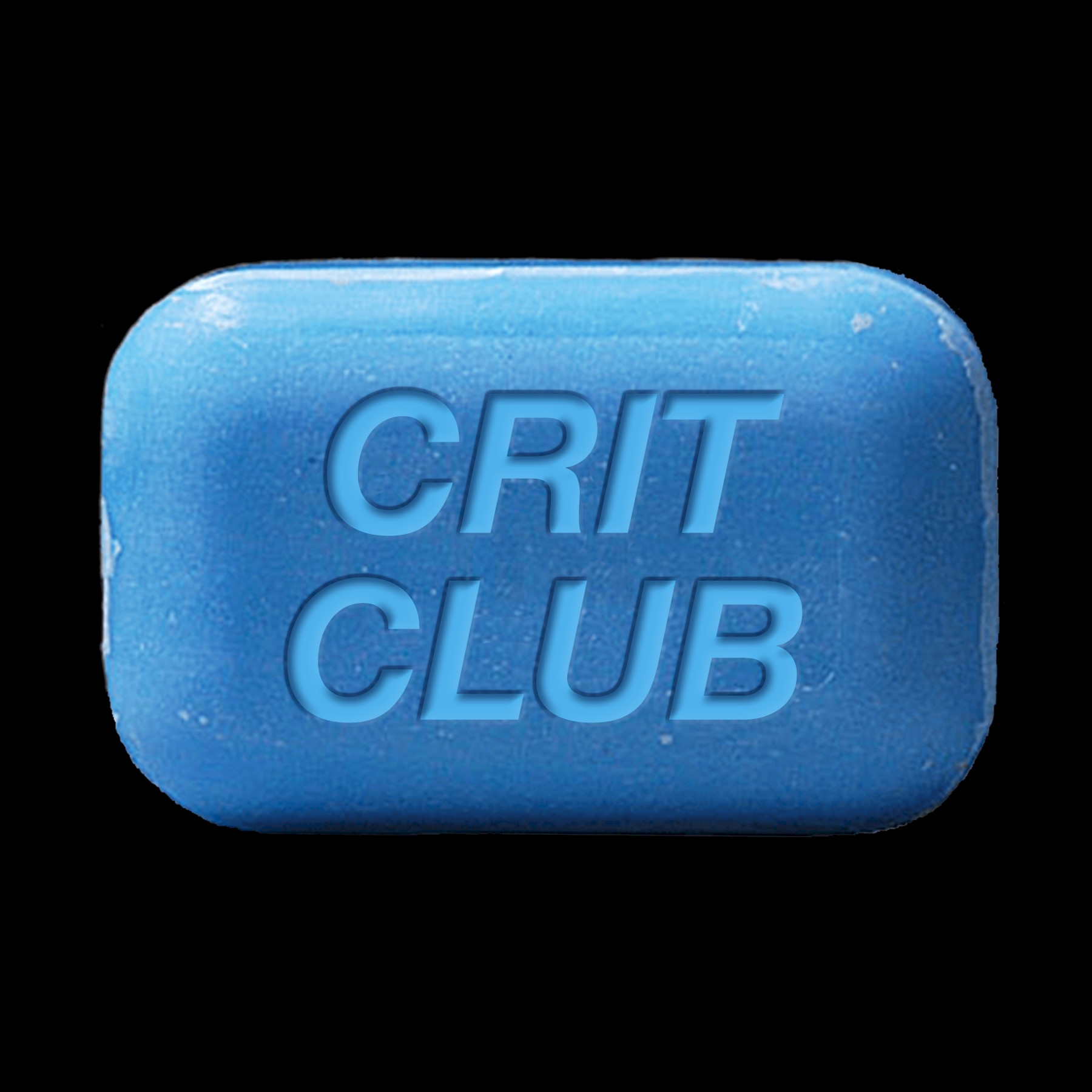
Crit Club is a contextual performance by Cem A. and Roberto Winter, in which two guests are invited to answer an unrealistic or impossible debate question relating to art. We are often stuck between the binary of praise and non-engagement in the art sphere where people are increasingly hesitant to disagree with others or even inhabit the same spaces with them. Our hope is to create a space where open disagreements can occur to foster a more critical culture.
In this third episode, curator, writer and educator Övül Ö. Durmuşoğlu and artist Farid Rakun debate a surprising and tricky question: should artworks be preserved or recycled after exhibiting?
Within the framework of this podcast, participants are asked (with tongue in cheek) to take part in a contextual performance – an activity that does not inherently apply to their direct function as artists or curators, but which expands, contextualizes and strengthens their standing within their community. As the episode develops, guests must navigate - through roleplay and and quick thinking - into unknown territory, where they face some existential questions themselves:
Does their expertise shed light on the issue at hand, or does it fall apart under extreme circumstances? Are they able to maintain their concept of art world hegemonies and structures in an apocalyptic scenario? Do they engage with the scenario as it is offered, or try to break out of the ‘prison’ created for them by the moderator?
By proposing an impossible-to-answer question, Crit Club creates a situation where there’s nothing at stake – or so it seems.
Credits:
Post production and music by Ege Aktan.
Crit Club is a contextual performance by Cem A. and has been commissioned by Het HEM for The Couch.
Transcript
Cem A.: Welcome to a new episode of Crit Club. Crit Club is a contextual performance where two guests are invited to answer an unrealistic debate question relating to art. We are often stuck between the binary of praise and non-engagement in the art sphere, where people are increasingly hesitant to disagree with others or even inhabit the same spaces with them.
Cem A.: Our hope is to create a space where open disagreements can occur to foster a more critical culture. Today, I'm joined by two guests slash performers. Övül Durmusoglu is a curator, writer and an educator based in Berlin. And Farid Rakun is an artist, part of a collective based in Jakarta. And I am Cem A., an artist based in Berlin.
Cem A.: I will be moderating this conversation. The question Övül and Farid will be debating is should artworks be preserved or recycled after exhibiting? Övül will be arguing that artworks should be preserved after exhibiting, and Farid argues that artworks should be recycled after exhibiting. So who would like to start?
Övül: Okay. Thank you, Cem, for this invitation. So I would start with my argument. I sincerely believe the artworks should be preserved, because each artwork creates has a unique mark of individual mark of the artist of a very particular moment, and losing that particular work also is very much about losing that unique signature in the unique context and time.
Övül: And therefore this sublimation should be preserved for the canonization and the for the better historization of contemporary art.
Farid: And for me, maybe reacting to what Övül said before, it's also coming from my own experience in dealing with this type of works that we're producing or at least we’ve produced so far. We had experience and sometimes we even missed experience with, you know, complete works in that sense. 00:02:26:00 - 00:03:07:10 That can be shown over and over and over again. But fortunately or unfortunately, that's not the case with many of our works. And then I want to touch upon the understanding of what we mean by recycling. For example, of course, recycling can be understood as like materiality. So certain wood can live afterwards as material, it’s not alive anymore, but the materials live on.
It makes use of a different kind of use after being submitted, but it's material. So it's like the arts, but also thinking about like how to rethink, how to restate works. For example, like how would it work for Istanbul Biennial? Like when we work with other people in Istanbul, collaborators, and then making for example for making t-shirts at that moment. If you want three stages in different contexts, then it won't bring the same and then we're aware of it. And then for us it's kind of where the value of that work lies, which is kind of like it relates to the audience itself the public that we’re talking to, etcetera etcetera.
00:04:06:19 - 00:05:03:18 When it has to bring or when it has to restate what it was, and then try things differently, then it becomes a totally different type of work. That's why I would go for recycling certain type of works after it's been shown originally.
Övül: Yes, I understand. Of course, this point of view about recycling. Yet, therefore when we cannot, when we cannot preserve that unique moment in production and when it, when the work actually also disappears, quickly from site, without its being maybe properly written about or it’s properly been seen, one can never be sure these days.
00:05:03:20 - 00:05:35:12 Though online visibility is a huge thing. Then we really lose something in this, in this big black hole of history and art production. And it is therefore quite dangerous to lose it and to recycle it. Though, of course one can also see the spirit continues to live, and the spirit of one word can continue to live with the other.
00:05:35:16 - 00:06:09:17 Yet at the same time, I believe it's not really possible. One can, of course, say that if all the works that are produced in various exhibitions are to be to be kept and collected, that means that we need a rich area or big, big rooms of storage, more than more than before. And this storage spaces are also very precise with temperature and air, and and all of the conditions that are there.
00:06:09:19 - 00:07:08:19 So of course it's a lot of investment in order to do that. Yet, it is much more as much more productive in terms of yeah, in terms of keeping the work alive and surviving its legacy and making it continue, and meet with different generations over time if possible.
Farid: Yes, thank you for that. I think I can continue this actually tapping into that. The difficulty of what we're facing right now at this very moment, actually right now, because we sit on a lot of other people's work in our in my collective. Other people’s work, because we make a lot of infrastructure in the in the in the form of events, for example, artistic…
00:07:08:19 - 00:08:01:24 events, exhibitions, student forums, etcetera. So we hold partially, we hold those type of works. And many of those work hasn’t been written [about], hasn't been analyzed, it hasn't been canonized for sure. And then we are asking ourselves how and what should we do with this matter and resources? You know, and then one thing that we know, or at least for us it's dangerous, is actually to treat it as an autonomous type of work that kind of like stands by themselves, all those kind of stuff.
00:08:02:03 - 00:08:36:16 Because again, like what we were talking about before, the spirit, it can be understood differently, which is, which is of course, any type of artwork when it's out there and it can be read, it has some life of its own, it can be read differently than how it was intended, etc. And it is actually like the function of criticism and and writing.
00:08:36:18 - 00:09:14:08 But for us it's kind of like a difficult route to take if we want to preserve it. And then it became like a question of like, what does it mean for us to archive? And then, but that's another kind of like another conversation by itself. Well, we just don't have the resources to preserve it as it is.
00:09:14:10 - 00:10:01:01 Maybe that's also why a lot of this type of work that we're making, it's kind of like it's fleeting. It's easier to keep. For example, it lives as files, digital files, for example, or when, if this piece of public art or like mural art, for example, we know even like the next day, there’s a risk for it to be \ out there not by the artists, not by the organizers, but by strangers.
00:10:01:03 - 00:10:41:05
So documentation became a thing. And then with this documentation, that's the question of whether if this still feels like that artwork, or actually the artwork lives on as something else. That's maybe what I was talking about with that understand of recycling. So it's not merely materiality, which I can talk about afterwards maybe if we're interested in talking about it, but this is the difficulty of binary, I think.
00:10:41:11 - 00:11:32:11 Like certain type of works, of course make sense when it lives on as it is, it is valuable as it is, and keep on being shown again and again and again. It will be shown as the first time and then it will of course stay that way, but a lot of times, and that's also what I think poses certain type of difficulties for researchers, for academics, for writers to deal with our type of artworks we’re making, is because this type of work is produced as a a consequence of the context or ecosystem we are living in. Sorry if it's too long.
00:11:33:00 - 00:12:05:08 Övül: No, not really! There are a lot of important arguments there that I want also want touch base, and maybe like kind of open up further as counters counter arguments. I of course, believe in this understanding of like kind of the, the art work is it is a form of a spirit that can be transferred, that can be recirculated in different forms to a certain extend.
00:12:05:10 - 00:12:38:21 And then I know that what I am talking about in terms of storage spaces in that kind of locations, it very much refers to a privilege, to a position of privilege in terms of keeping those spaces and sustaining those those spaces. Yeah, first of all, of course there are many, there is a major a housing problem in all over the world for people to live in.
00:12:38:23 - 00:13:20:09 Yet there are also still, I believe, unused spaces that are kept for you know, different purposes, different investment purposes, that still can be used and put up for for storage, if possible. And then a certain part of like investment coming from like the contemporary art scene, it should be able to preserve the works and actually in an equal democratic way.
00:13:20:11 - 00:13:52:24 So that these works are not lost in history. So that they can be cherished by different audiences or even that kind of different generations. Because of course the historicisation process always works according, you know, to the past. So we always like take the past as a starting point in order to build a narrative of the canon as well.
00:13:53:01 - 00:14:38:20 However, if we think it's rather than the past contemporary is actually the moment to build that story of the work on. Then of course keeping those works, and enabling facilities equally for all works in order for the history to choose to write itself rather than it being directed by certain voices or positions, deciding what is worth showing and what is worth destroying.
00:14:38:22 - 00:15:21:19 Farid: Yeah, actually, I want to I want to enforce the last point to get the power to an institution in quotation marks, what's worth seeing, what's worth perserving. Maybe I want to continue with sharing a dilemma of like believing in giving the remote control. That's how we say it, me and my friends, to as many people as possible, of course, it can change through time.
00:15:21:21 - 00:15:54:17 Who's holding remote control at one time? That matters. But like thinking about the importance of historicisation making arguments so it won't be forgotten and all this kind of stuff. Then that doesn’t fit, you know, it doesn’t fit easily with the way we work on a daily basis. When we don’t even understand what is being held by ourselves, but also by others.
00:15:54:19 - 00:16:37:11 So in the sense has been recycled because it has been read, it's been used and without a price, I mean, like even flyers, T-shirts and all those kind of stuff, which is important for our practice. A lot of times it's even important for the artwork itself and then it's kind of like, it's a catch 22 moment right now, which we're facing because, it's of like we realize we are delegating the continuation of the life of work to others as well.
00:16:37:13 - 00:17:17:08 We think too much of others maybe, but then who can, who is responsible? It's about responsibility maybe. With the responsible to tell our stories, you know. Like do we want to take it? And then being strong about it or being like, you know, strong voiced about it, or should we be much more open to interpretation of canonisation and actually much more about reading and listening to others as well.
00:17:17:10 - 00:18:01:24 But based on our experience, there are traps in any the things that we're going to take anyway. So yeah, we had realized the problems, or the challenges, the challenges we are facing when we said, life of works, especially of well, I'm not talking about our own works, but works of others that we have access to it's about responsibility of whose responsibility is it to take care of it.
00:18:02:01 - 00:18:36:12 So that's one; maintenance work. And then also interpretation, you know. In any case, of course our word canonisation or historicisation, our relation with our work is politcal by essence, because of that of what you said, your last point for who own the right to to say or to to argue for or against certain type of work.
00:18:36:14 - 00:19:25:12 And that's why I like coming back to the position of of recycling. I think we are more comfortable of opening it up. Or at least to certain extent, and this is not works as it was or work as it was shown before. But you like open to the life of wood afterwards and then meaning as well, like some works that we have enabled to produce, not our work, but we enable it to produce it.
00:19:25:14 - 00:20:17:24 We even push it further off like, you know, the after life in material terms. What if, like the wood, the metal, the strains, are being used for something else? Then it can find afterlife on on the hands of others, I think that's what I'm advocating for.
Övül: Yes. Maybe it is also interesting to reframe this conversation as a spirit of art versus autonomy of art, or like life of the work of art and afterlife of the work of art.
00:20:18:01 - 00:21:09:00 Because in the Western defined, notions of life, life and death and or in the Western defined way of fighting, the fighting against death, that's why it is important to fight against that, to be able to see how the work survives and doesn't survive after its production and after it's after it's a visibility of that kind of one moment, then to be picked up by various researchers, curators, historians to be seen.
00:21:09:02 - 00:21:57:15 And also, of course, yes, this fighting against death is a very interesting, I think, concept. And then this is something that we also experience like throughout the Western discussion of the pandemic as well, because I know it's also different than the rest of the world. This is very particular here, this obsession with fighting against death. But of course also because of that, we are able to view and see certain works that are kept to be now, you know, discussed in a different way, to be opened up in a different way today.
00:21:57:15 - 00:22:52:18 And then they become, of course, important points in the way we make work or like in the way we reference work. So when of course, it is just the document of the work that just like stays and not the body itself, we also, I think lose some of these opportunities also as well. And yeah, then it's also, you know, when there is, of course I'm aware of that kind of major and important discussion about recycling the work or the art work is also part of like the whole, sustainability, the sustainability discussions in various art institutions.
00:22:52:20 - 00:23:27:01 Yet I'm not sure it's always, there's always something lost. So we need to always look at what are we losing and what are we gaining from recycling or destroying an existing work, and not giving it a chance to continue its own journey, its own decision, and not our decision to claim this presence in the world?
00:23:27:03 - 00:24:03:06 Farid: Thank you for bringing up a lot of things, that I can continue. But I think, I don't know, time limitations I’ll keep it short. I think the sustainability of sustaining that certain type of work. The question becomes like, what should we sustain? Like should we sustain the work itself? Because it's not what method of the matter, what the values are, or should we sustain the practice?
00:24:03:12 - 00:24:43:18 I think for us that is the question. Should we should we sustain the spirit of the practice of certain sensibility to make certain work happen. Or should we sustain the work itself? To touch upon that Western obsession on authorship, on names of individuals, because how the history has been made so far. It makes sense to make it to me to write history, thoughts, biographies.
00:24:43:20 - 00:25:19:17 But what if for us, that's the kind of like question we ask ourselves. What if we can write history other ways? Either way, it's like, to keep the spirit alive. So it doesn't matter who writes it, you know, like, that's kind of like the total opposite of things. But I don't think we’re even ready enough to make it the total opposite, but we find it valuable to interrogate this.
00:25:19:17 - 00:25:52:03 And I think it has been useful to interrogate that, because it could open up certain things. And the last thing that I want to touch upon, it's like the collecting of things, or like to acquire, acquisition things, because if we, so far with my limited knowledge, if if we collect things, then we keep that history alive that way.
00:25:52:05 - 00:26:51:01 But what if a lot of work I think is really difficult to collect. That's one, or it actually avoids being collected that way. Then it becomes like a question we like to pose; what if we collect things other ways? Is there any other way? Or like in order to sustain again, touching upon what you said before, to sustain things that we deem to be valuable, to sustain my collecting other ways of like, you know, fleeting works of atmospheric works ah all those kind of stuff, how we can actually collect that. It’s not new at all, performance art, time based art, and all those kind of stuff started that. We like to push it further.
00:26:51:03 - 00:27:40:08 And then that's why it's conversation tonight, tonight my time at least, is valuable, because that has been kind of like push and pull for a lot of defragment of our practice so far. Like can we ask collectives whether it was individuals or institutions to figure out other ways of collecting, let's say?
Övül: I think this is a very valid question to maybe leave to the audience, because I do believe also various collecting ways should happen in the way that it's not happening right now.
00:27:40:10 - 00:28:12:16 So also, a collecting can be or should be more democratized, should be more like open and should be also, all of these places of storage or viewing should also be possible for public, to connect with. And not only, you know, not only for the sake of the existence of the work itself, per se.
00:28:12:18 - 00:28:43:02 So I think despite our different positions, there are certain points, of course, that we also agree on this kind of democratization, although we discuss in different moments of democracizing. So this moment, of this question of collecting, I would like to leave for our followers, to decide on. And maybe to be taken on the continuing series of performers in the discussion.
00:28:43:04 - 00:29:08:16 Cem A.: Yeah. Thank you so much to both of you for agreeing to be a part of this performance and performing these disagreeing positions in this on the this debate question. I think that there is, as you discussed, so much power and first of all, deciding what could be preserved and what could be recycled or what do we lose in if we choose both of the options, and what is lost when we go ahead.
00:29:08:18 - 00:29:45:13 And also, of course, the autonomy versus the spirit of the art is, I think, very present. And yeah, as you concluded, also the collecting of art is of course, the fundamental question and how we can preserve or what we can preserve. Yeah. Thank you so much for once again participating in this and see you in a future episode.
